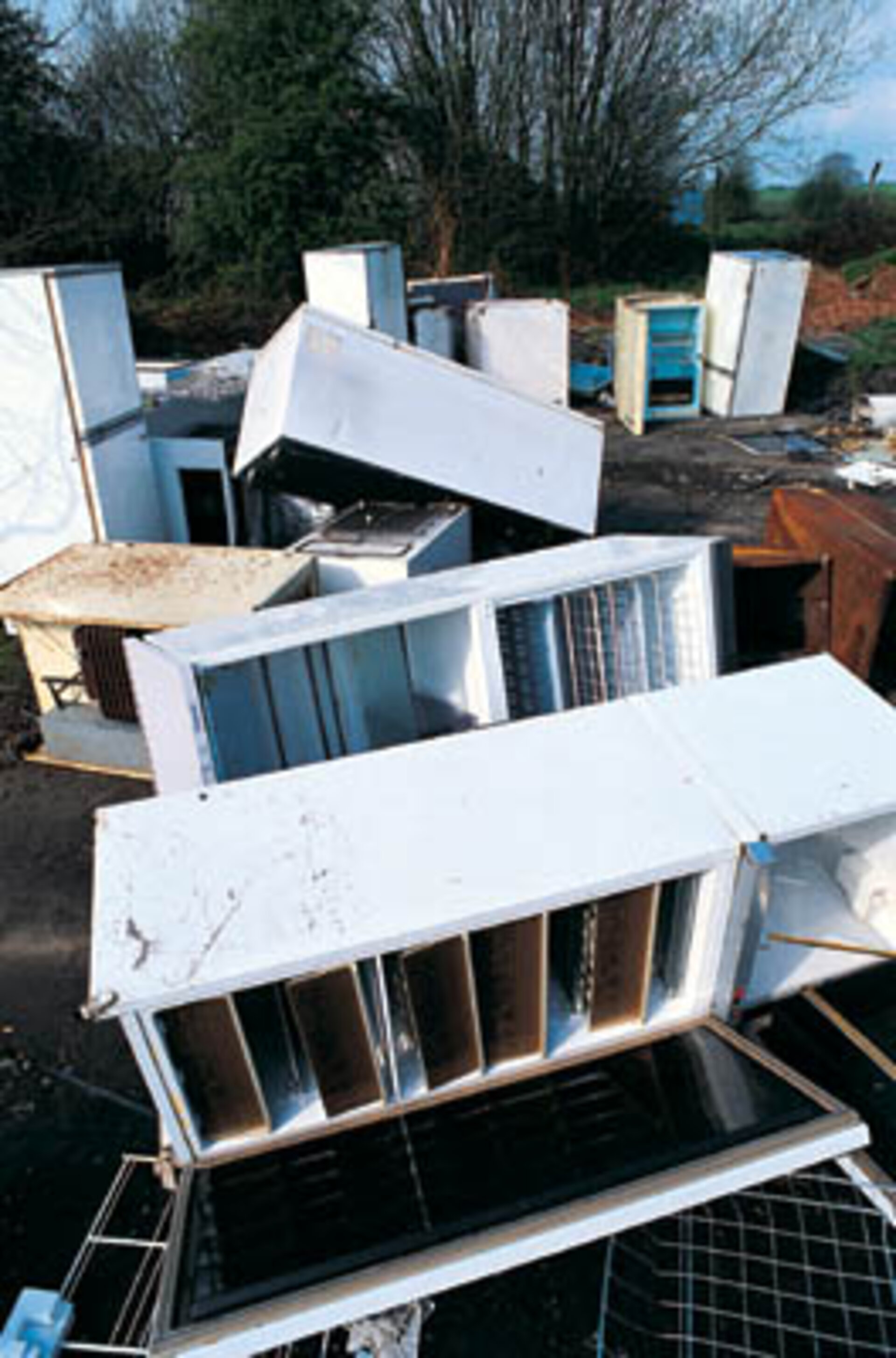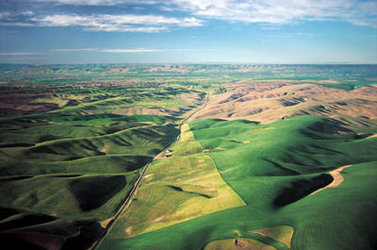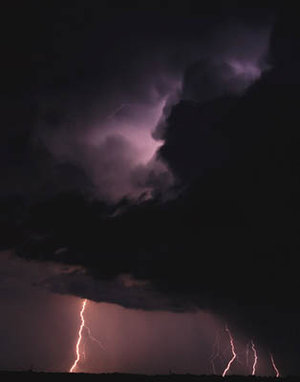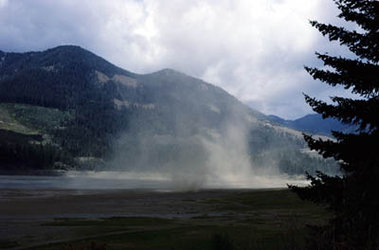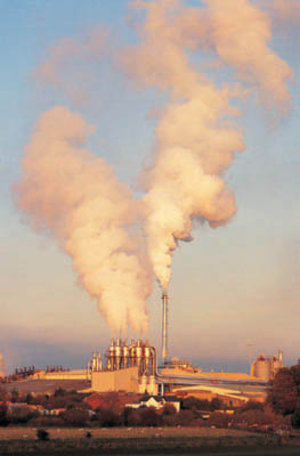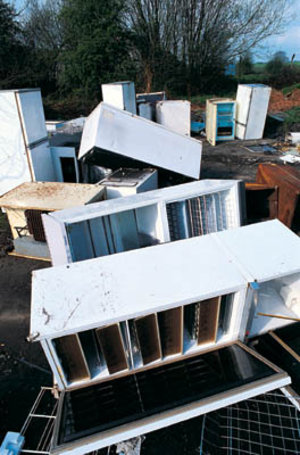Ozone hole
The hole in the ozone layer that now opens annually above the South Pole is a dramatic symbol of our atmosphere’s inherent unpredictability. It was caused by what were developed to be stable, non-polluting chemicals: chloroflurocarbons (CFCs), once used in aerosols and refrigerators.
But CFCs turned out to circulate throughout the globe and some made it up as high as the stratosphere. Safely inert at lower altitudes, they were broken up at these scanty heights by intense ultraviolet radiation from the sun.
The chlorine liberated from CFCs then turned out to be highly reactive with the stratospheric ozone layer that is mainly concentrated between 25 and 35 km up and which blocks this harmful ultraviolet from reaching the Earth’ surface. Excess ultraviolet exposure causes skin cancer, cataracts and immune system damage in humans, and injures animals, plants and even microscopic phytoplankton. A single chlorine molecule has a devastating effect, taking apart ozone molecule after ozone molecule.
The 1987 Montreal Protocol banned the production and use of CFCs, but too late to stop a mammoth 28 million km2 ozone hole opening over Antarctica each spring. Scientists predict another ozone hole will eventually open over the Arctic, already the site of seasonal ozone thinning, as the extreme winter cold of both regions accelerates ozone destruction.
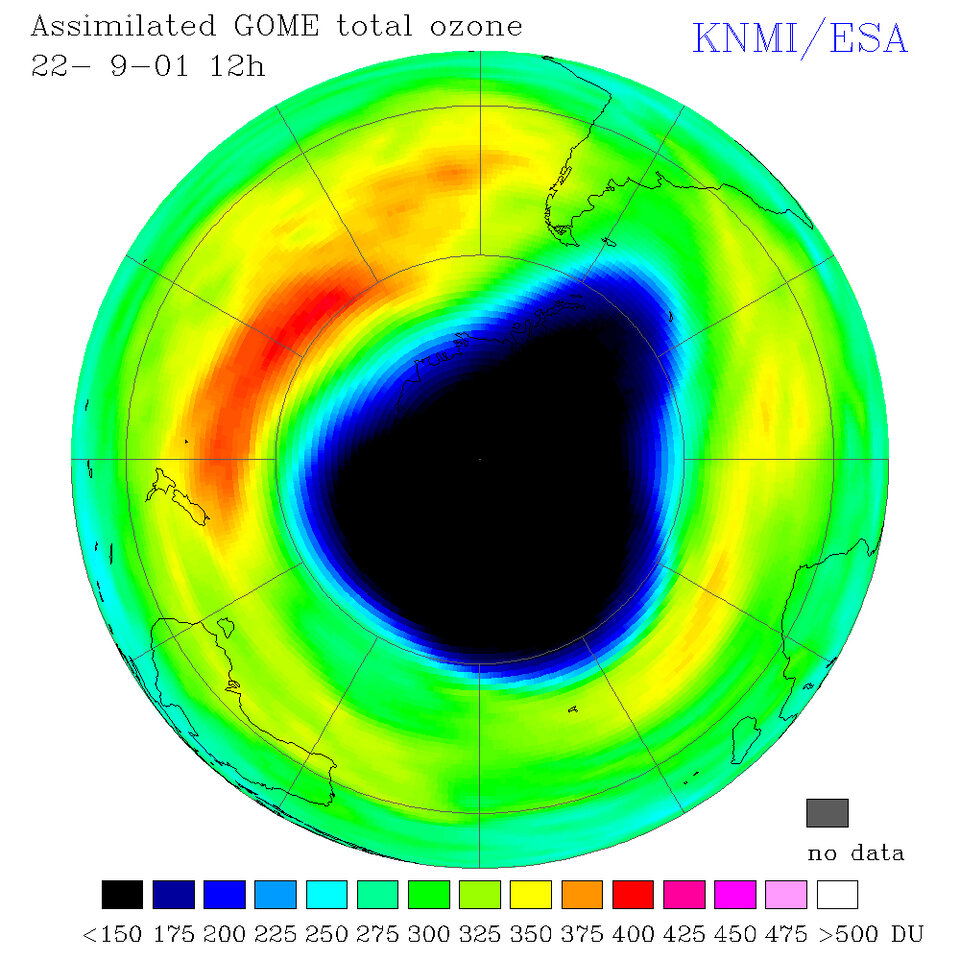
ERS-2, Envisat’s predecessor mission, has been mapping global stratospheric ozone levels since 1995. Envisat is flying a dedicated instrument to continue this task. Known as GOMOS, it actually functions by looking away from the Earth to the stars. A pre-programmed star tracker fixes a star and follows it as it ‘sets’ behind the Earth.
GOMOS has a telescope-linked spectrometer to analyse the starlight as it passes through the Earth’s atmosphere. This detects the vertical concentration of ozone as well as other trace gases that react with it, plus stratospheric temperatures. This is particularly important information as some studies suggest the high atmosphere is being further cooled by global warming retaining heat in the lowest, thickest part of the atmosphere. Such cooling would speed up the rate of ozone destruction further and make an Arctic - and maybe European - ozone hole more likely.
By observing about 30 stars per orbit GOMOS can produce as much data daily as 360 separate ground stations. The MIPAS and SCIAMACHY instruments simultaneously show how CFCs and other trace gases make their way up from the lower troposphere across the boundary of the stratosphere. Scientists will be able to learn more about the complex chain of chemical reactions that continue to affect the ozone layer and estimate how long it will take to replenish itself.


